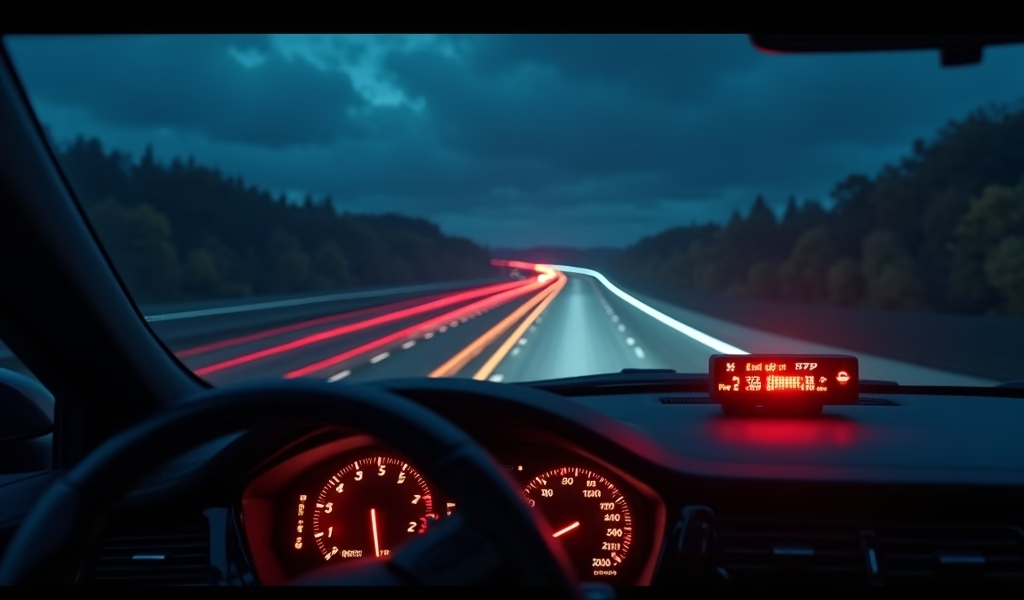Overview
This guide examines modern radar detectors as sophisticated driving tools that provide early warnings about speed monitoring equipment while enhancing road awareness, covering everything from technical functionality and key features to legal considerations and installation tips. The article recommends specific models for different budgets and driving needs, emphasizing that quality detectors serve as part of a complete driver alert system rather than just ticket-avoidance tools.
Table of Contents
- What Are Radar Detectors and Why You Need One
- How Radar Detectors Work: The Technical Side
- Key Features to Look for in a Quality Radar Detector
- Best Radar Detectors of 2023: Our Top Picks
- Installation Tips: Maximizing Your Detector’s Performance
- Legal Considerations: Where You Can and Can’t Use Them
- Common Myths About Radar Detectors Debunked
- Maintenance and Updates: Keeping Your System Current
- Creating a Complete Driver Awareness System
- Choosing the Right Radar Detector for Your Needs
- Conclusion
- Frequently Asked Questions
What Are Radar Detectors and Why You Need One
Picture this: You’re cruising down the highway, enjoying the drive when suddenly those dreaded blue and red lights flash in your rearview mirror. We’ve all been there, and it’s never pleasant. That’s where the best radar detector comes in – your personal highway guardian against unexpected speed traps.
Modern radar detectors have evolved dramatically from the simple “fuzz busters” of decades past. Today’s devices are sophisticated driving companions that provide early warnings about speed monitoring equipment while enhancing your overall road awareness.
As a professional mechanic who’s installed hundreds of these devices, I can tell you they’re more than just ticket-avoidance tools. Quality detectors serve as comprehensive driver alert systems that can help you stay within legal limits and improve your situational awareness on increasingly monitored roadways.
While not legal everywhere (we’ll cover that later), radar detectors remain permitted for personal vehicles in most U.S. states. They operate in an interesting technological middle ground that allows drivers to level the playing field when it comes to speed enforcement.
How Radar Detectors Work: The Technical Side

The Basic Principles
At their core, radar detectors are specialized radio receivers tuned to specific frequencies used by police radar equipment. When law enforcement points a radar gun at traffic, it emits radio waves that bounce off vehicles and return to calculate your speed using the Doppler effect.
Your detector catches these radio emissions before they can measure your speed, giving you crucial seconds to check your speedometer and adjust if needed. This early warning system is the fundamental value proposition of these devices.
Understanding Radar Bands
Modern radar detectors scan multiple frequency ranges known as bands:
- X-band (10.5-10.55 GHz): Older technology, less common but still used in some rural areas
- K-band (24.05-24.25 GHz): Widely deployed across the country
- Ka-band (33.4-36.0 GHz): The most prevalent modern police radar frequency
- Laser (LIDAR): Focused light beams that measure speed almost instantaneously
High-quality detectors don’t stop at just avoiding tickets. Many provide alerts for red light cameras, speed cameras, construction zones, and other potential hazards. This transforms them from simple “ticket avoiders” into comprehensive driving assistance tools.
Key Features to Look for in a Quality Radar Detector
Detection Range: Your First Line of Defense
The primary purpose of any detector is providing adequate warning time. Top-tier models can detect signals from several miles away on straight, open highways. This extended range gives you plenty of time to check your speed before entering enforcement zones.
When evaluating options, look specifically for units that emphasize long-range Ka-band detection, as this is the most commonly used police radar frequency today.
False Alert Filtering: Separating Noise from Threats
Nothing ruins the utility of a radar detector faster than constant false alarms. Modern vehicles use similar frequencies for collision avoidance systems and adaptive cruise control, which can trigger alerts on basic detectors.
Advanced filtering technologies in premium models include:
- GPS lockouts to “remember” and silence stationary false alerts
- Band segmentation to ignore frequencies rarely used by police
- Traffic sensor filtering to reduce alerts from roadside equipment
- Speed-based sensitivity that adjusts detection thresholds based on your speed
Smart Features and Connectivity
The best detectors of 2023 function as connected devices in your vehicle ecosystem, offering:
- Bluetooth and Wi-Fi connectivity for seamless updates
- Smartphone app integration for community alerts
- Cloud-based threat database updates
- Real-time police activity alerts from networked users
User Interface and Alert System
Consider how the detector communicates potential threats. Superior models provide:
- Voice alerts that specify the exact threat type
- Directional arrows showing where signals originate
- Multi-color displays with threat level indication
- Customizable alert tones and volumes
- Auto-muting features that reduce volume after initial warnings
Best Radar Detectors of 2023: Our Top Picks
Premium Champion: Uniden R8
Price: $699
The Uniden R8 stands at the pinnacle of detection technology with unprecedented range and sensitivity. This flagship model delivers:
- Exceptional long-range detection across all bands
- Built-in GPS with red light and speed camera alerts
- Directional arrows indicating threat location
- Color OLED display with custom themes
- Voice alerts in multiple languages
- Advanced K/Ka band segmentation for minimal false alerts
Pros: Unmatched detection range, remarkably accurate alerts, regular firmware updates, user-friendly interface
Cons: High price point, larger form factor than some competitors
Mid-Range Excellence: Escort MAX 3
Price: $399
The Escort MAX 3 hits the sweet spot between performance and value with:
- Reliable long-range detection capabilities
- AutoLearn technology that remembers and filters false alerts
- Built-in GPS for fixed camera warnings
- Escort Live app compatibility for community alerts
- Digital signal processing for enhanced accuracy
Pros: Great performance-to-price ratio, superior false alert filtering, intuitive controls
Cons: Some advanced features require subscription, mounting system could be more robust
Value Champion: Uniden DFR7
Price: $199
Don’t let the modest price tag fool you—the Uniden DFR7 delivers impressive capabilities with:
- Very good K and Ka-band detection range
- GPS with location memory for false alert management
- Quiet ride feature that silences alerts below selected speeds
- Red light and speed camera alerts
- Clean, easy-to-read display
Pros: Outstanding value, good detection range for the price point, simple setup
Cons: No directional information, fewer filtering options than premium models
Best Overall Value: Valentine One Gen2
Price: $499
The Valentine One Gen2 continues its legendary reputation with significant improvements:
- Directional arrows showing threat location
- Exceptional sensitivity across all bands
- Bluetooth connectivity for smartphone integration
- Superior build quality and durability
- Industry-leading customer support
Pros: Directional awareness, military-grade construction, modular design supporting future upgrades
Cons: Steeper learning curve, less intuitive interface than some rivals
Installation Tips: Maximizing Your Detector’s Performance
Finding the Perfect Position
Proper placement dramatically impacts detector performance. For optimal results:
- Mount high on your windshield, centered horizontally
- Ensure clear line of sight through glass (avoid tinted sections or metallic windshield elements)
- Keep away from GPS units, dash cams, or electronic devices that might cause interference
- Position so displays and controls remain accessible while driving
Power Options: Beyond the Basic Cord
Most detectors include a power cord for your vehicle’s 12V outlet, but this leaves unsightly wires across your dashboard. Consider these cleaner alternatives:
- Hardwiring kits that connect directly to your fuse box
- Professional installation for hidden wiring
- Battery-powered options for temporary use or motorcycle installation
DIY vs. Professional Installation
While basic setup is straightforward, professional installation offers distinct advantages:
- Clean, hidden wiring for a factory-like appearance
- Optimal placement for maximum performance
- Integration with other vehicle systems
- Typically costs between $75-150 but provides peace of mind
As a mechanic who’s done countless installations, I recommend professional mounting for anyone who plans to keep their detector long-term. The performance difference from proper placement alone can be substantial.
Legal Considerations: Where You Can and Can’t Use Them

Domestic Restrictions
Before investing in a radar detector, understand that they are:
- Illegal in Virginia and Washington D.C. for all vehicles
- Prohibited in all commercial vehicles weighing over 10,000 pounds nationwide
- Banned on most military bases
- Not permitted in several Canadian provinces
- Subject to immediate confiscation in prohibited areas
According to the National Highway Traffic Safety Administration, regulations vary significantly by location, so check local laws before using your detector, especially when crossing state lines.
International Travel Considerations
If you drive internationally, be aware that radar detectors are illegal in most European countries, Australia, and many Asian nations. Significant fines can result from their use or even possession in these jurisdictions.
Common Myths About Radar Detectors Debunked
Myth 1: “Radar detectors make you immune to tickets”
Reality check: No detector guarantees complete protection. Instant-on radar, LIDAR, and visual speed estimates can still catch you off guard. Even the best detectors are tools to enhance awareness, not magical ticket forcefield generators.
Myth 2: “Police can detect your detector”
Partial truth: While “radar detector detectors” exist (primarily VG-2 and Spectre systems), modern premium detectors incorporate stealth technology that makes them virtually invisible to these countermeasures. The cat-and-mouse game continues, but technology currently favors the detector side.
Myth 3: “All radar detectors are basically the same”
Absolutely false: The performance gap between budget and premium models is substantial. Higher-end units typically provide 3-4 times the warning distance of economy models and dramatically better false alert filtering. In radar detection, you generally get what you pay for.
Maintenance and Updates: Keeping Your System Current
Software Matters More Than Ever
Unlike the detectors of yesteryear, modern units require regular updates to remain effective. Premium brands provide:
- Firmware updates improving performance and adding features
- Database updates for fixed camera locations
- New filtering algorithms to reduce false alerts
Most manufacturers now offer straightforward update processes via Wi-Fi or smartphone connections. Neglecting these updates significantly reduces your detector’s effectiveness over time.
Physical Maintenance Tips
To keep your detector performing at its peak:
- Clean the sensor lens regularly with a microfiber cloth
- Check power connections for corrosion or damage
- Inspect mounting hardware for wear
- Avoid leaving the unit in extreme temperatures
When It’s Time to Upgrade
Technology advances rapidly in the ongoing battle between enforcement and detection. Consider upgrading your detector:
- Every 3-5 years for occasional highway drivers
- Every 2-3 years for daily highway commuters
- When significant new detection technologies emerge
- If you experience an increase in unexpected tickets
Creating a Complete Driver Awareness System
Modern radar detectors work best as part of an integrated driving system that might include:
Dash Camera Integration
Pairing your detector with a quality dash cam provides:
- Evidence in case of disputes about moving violations
- Documentation of any questionable enforcement tactics
- Some newer units combine both functions in a single device
Navigation System Synergy
Many detectors now integrate with navigation apps to provide:
- Warnings about upcoming enforcement zones
- Alerts for speed limit changes
- Real-time traffic data integration
Vehicle Integration Options
The latest premium detectors can connect to:
- OBD-II ports for accurate vehicle speed readings
- Custom installations that integrate with your vehicle’s electronics
- Smartphone ecosystems for a seamless experience
Choosing the Right Radar Detector for Your Needs
Selecting the ideal detector ultimately depends on your specific driving habits and budget. Consider these scenarios:
For the Highway Commuter
If you regularly travel highways and interstates, prioritize:
- Maximum long-range detection on Ka-band
- GPS filtering to reduce false alerts
- Directional indicators showing threat location
For the Urban Driver
City driving presents different challenges. Look for:
- Superior false alert filtering capabilities
- Red light and speed camera detection
- Quiet ride features that silence alerts below certain speeds
For the Tech Enthusiast
If you love staying on the cutting edge, consider:
- Smartphone app integration
- Cloud-connected community alerts
- Regular firmware updates and new features
For the Set-and-Forget Driver
If you prefer simplicity over endless customization:
- Intuitive interface with minimal buttons
- Auto-sensitivity features that adjust based on speed
- Voice alerts that don’t require looking at the display
Conclusion
The best radar detector does far more than just help you avoid tickets – it transforms your driving experience by enhancing situational awareness and providing peace of mind on increasingly monitored roadways. Whether you choose a top-of-the-line model with all the bells and whistles or a solid mid-range option that covers the essentials, the right detector can pay for itself many times over.
Remember that these devices work best when used responsibly as part of a commitment to safe, attentive driving. No technology replaces good judgment behind the wheel. As vehicle technology continues to evolve, radar detectors have kept pace, offering sophisticated protection that was unimaginable just a decade ago.
Whichever model you select, take time to learn its features, keep its software updated, and position it optimally in your vehicle. Your radar detector is an investment in both your driving record and your peace of mind on the open road.
Frequently Asked Questions
Are radar detectors legal in the United States?
Radar detectors are legal in passenger vehicles in most U.S. states except Virginia and Washington D.C. They remain illegal in all commercial vehicles over 10,000 pounds nationwide.
Can police detect that I’m using a radar detector?
Some police use radar detector detectors (RDDs) like VG-2 and Spectre units. However, most modern premium detectors include stealth technology making them virtually undetectable.
Do radar detectors work against laser speed guns?
Radar detectors can detect laser (LIDAR) signals, but the warning often comes too late since laser beams are highly targeted. Laser jammers offer better protection but face stricter legal restrictions.
How far can a good radar detector detect police radar?
Premium radar detectors can detect radar signals from 2-5 miles away on flat, open highways. Performance varies based on terrain, weather conditions, and the specific radar band being used.
Are expensive radar detectors worth the investment?
High-end detectors typically offer 3-4 times the detection range, superior false alert filtering, and more features than budget models. A single avoided ticket can often cover the price difference.


Pingback: Radar Detector for Motorcycles Top Tips - knowsyourcar.com